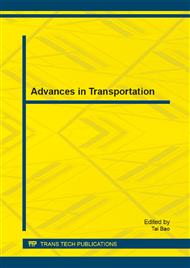p.3
p.9
p.15
p.19
p.24
p.28
p.35
p.39
p.43
Application of Impact-Echo Method in Grouting Inspection in Ducts inside Prefabricated Box Girder
Abstract:
Based on basic principle of detection using impact-echo method, in combination with urgent demand of grouting quality inspection in ducts inside post tensioning type prefabricated box girder in bridge engineering, impact-echo method has been used for non-destructive detection of grouting compactness in pre-stressed ducts inside prefabricated box girder. Verification by beating away measuring points shows that the impact-echo method can accurately locate metal corrugated pipes and qualitatively judge grouting compactness inside prefabricated box girder ducts, to allow effective inspection of grouting quality in strands of pre-stressed ducts.
Info:
Periodical:
Pages:
24-27
Citation:
Online since:
January 2014
Authors:
Keywords:
Price:
Сopyright:
© 2014 Trans Tech Publications Ltd. All Rights Reserved
Share:
Citation:


